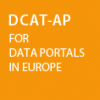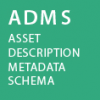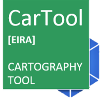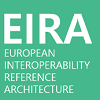Use the conceptual model for European public services to design new services or re-engineer existing ones and reuse, whenever possible, existing service and data components.
Covered by:
| Recommendation 34 | Use the conceptual model for European public services to design new services or reengineer existing ones and reuse, whenever possible, existing service and data components. Supporting Solutions |
| Recommendation 35 | Decide on a common scheme for interconnecting loosely coupled service components and put in place and maintain the necessary infrastructure for establishing and maintaining European public services. Supporting Solutions |
Legal initiatives |
Description |
Recommendations |
|
Status: In force and transposed |
The INSPIRE Directive lays down general rules setting up an infrastructure for spatial information in Europe for the purposes of European Union (EU) environmental policies and for policies or activities which may have an impact on the environment. |
Recommendation 35 |
|
Short title: Open Data Directive Title: Directive 2019/1024 on open data and the re-use of public sector information (Recast) Status: In force and transposed |
The directive promotes the use of open data and lays down the legal framework for the reuse of public-sector information such as geographical, land registry, statistical or legal information held by public-sector bodies or public undertakings, and of publicly funded research data. Public-sector bodies and public undertakings must make their documents available in any pre-existing format or language and, where appropriate, by electronic means in formats that are open, machine readable, accessible, findable and reusable, complete with their metadata. | Recommendation 41 Recommendation 42 Recommendation 43 |
|
Short title: INSPIRE DIRECTIVE Status: In force and transpose |
The INSPIRE Directive lays down general rules setting up an infrastructure for spatial information in Europe for the purposes of European Union (EU) environmental policies and for policies or activities which may have an impact on the environment. The European infrastructure builds on that of spatial information that is established and operated by EU countries. |
Recommendation 42 |
|
Short title: General Data Protection Regulation (GDPR) Status: In force |
The General Data Protection Regulation (GDPR) allows European Union (EU) citizens to better control their personal data. It also modernises and unifies rules allowing businesses to reduce red tape and to benefit from greater consumer trust. The GDPR is part of the EU data protection reform package, along with the data protection directive for police and criminal justice authorities. |
Recommendation 42 |
|
Short title: Single Digital Gateway Regulation Status: In force |
The single digital gateway will facilitate online access to the information, key administrative procedures and assistance and problem-solving services that citizens and businesses may wish to contact if they encounter problems when exercising their internal market rights while living in or doing business in another EU country. | Recommendation 42 |
| Standards and Specifications | Relevant Recommendations | Corresponding Solutions |
|
Name: DCAT-AP Description: The DCAT Application Profile for data portals in Europe (DCAT-AP) is a specification based on the Data Catalogue Vocabulary (DCAT) developed by W3C. This application profile is a specification for metadata records to meet the specific application needs of data portals in Europe while providing semantic interoperability with other applications on the basis of reuse of established controlled vocabularies (e.g. EuroVoc) and mappings to existing metadata vocabularies |
Recommendation 42 | 
|
|
Name: ADMS-AP Description: The Asset Description Metadata Schema (ADMS) is a specification used to describe reusable solutions, such as data models and specifications, reference data and open source software. It was created with the help of a working group of experts. On 1 August 2013, W3C published ADMS as a W3C Working Group note. |

|
|
|
Name: BregDCAT-AP -RoR Description: The Registry of Registers is a solution dedicated to an application profile of DCAT-AP for base registries, namely, BRegDCAT-AP, aiming to provide a standard data model / specification for base registries access and interconnection. |
Recommendation 42 | 
|
|
Name: BregDCAT-AP -RoR Description: The Core Public Service Vocabulary Application Profile is a data model that has been developed in the context of a Working Group for describing public services. The main focus of the CPSV-AP version 1.00 was the description of public services and business events on the Points of Single Contact which each Member State had to implement in the context of the Services Directive (2006/123/EC). |
Recommendation 42 | 
|
|
Name: Core Vocabularies Description: Core Vocabularies are simplified, reusable, and extensible data models that capture the fundamental characteristics of an entity, such as a person or a public organisation, in a context-neutral manner. |
Recommendation 42 | 
|
|
Name: ELI Ontology Description: The European Legislation Identifier (ELI) is a framework to make legislation metadata available online in a standardised format, so that it can be accessed, exchanged and reused across borders. For general information about ELI (governance, tools and news), and the implementation status of ELI by various stakeholders (in particular, the way ELI is implemented by the Office of Publications on Eur- Lex), please consult the ELI Register on Eur-Lex. |
Recommendation 42 | 
|
|
Name: Core Public Service Vocabulary (CPSV-AP) Description: The Core Public Service Vocabulary Application Profile is a data model that has been developed in the context of a Working Group for describing public services. |
Recommendation 42 | 
|
| Solution | Description | Associated Recommendations |

|
The Cartography Tool (CarTool©) brings together high-level support for the EIRA© as a plug-in for the popular ArchiMate® modelling tool Archi®. It includes both editing features, to model solutions using the EIRA©, and querying functionalities to query an EIRA©-based Cartography of solutions. CAMSS Team. | Recommendation 34 |

|
Big data test infrastructure (BDTI) helps public administrations improve the experience of the citizen, make government more efficient and boost business and the wider economy through big data. Big data is high-volume, high-velocity and high-variety information that requires new forms of processing to enable enhanced decision-making, insight discovery and process optimisation. | Recommendation 35 |

|
The eID Building Block allows public administrations and private service providers to easily extend the use of their online services to citizens from other Member States, in line with the eIDAS Regulation. | Recommendation 35 |

|
The European Interoperability Reference Architecture (EIRA©) is an architecture content metamodel defining the most salient architectural building blocks (ABBs) needed to build interoperable e-Government systems. The EIRA© provides a common terminology that can be used by people working for public administrations in various architecture and system development tasks. The EIRA© was created and is being maintained in the context of Action 2016.32 of the ISA² Programme. The EIRA uses (and extends) the ArchiMate language as a modelling notation and uses service orientation as an architectural style. | Recommendation 34 |

Location Framework Blueprint |
The European Union Location Framework (EULF) Blueprint is a framework of recommendations and related guidance for publishing and using location information and applying interoperability principles in digital government. The EULF Blueprint was initially developed through the EULF project in the ISA programme. The content has been updated extensively through the European Location Interoperability Solutions for e-Government (ELISE) project, which is part of the ISA2 programme. | Recommendation 35 |

|
In the context of European Citizens' Initiatives (ECI), the Online Collection software (OCS) is a tool for online data collection. OCS enables citizens to support a given initiative and organizers to manage its operations. The tool also streamlines both data collection and its verification by the National Authorities. OCS respects the Regulation (EU) No 211/2011 and Regulation (EU) No 1179/2011 of the European Parliament and of the Council. Within ISA action 1.12, the European Commission contributes to its development with the aim to provide a generic tool available to all initiative organizers. OCS is made available under a EUPL license. |
Recommendation 34 |

